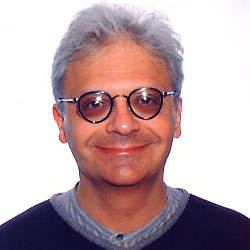
It has been almost a year since I assumed the editor-in-chief role for Journal of the ACM (JACM). The move coincided with the start of a new decade. For both reasons, it seems the right time to share some thoughts on how ACM’s oldest publication is doing and where it might be headed.
First published in January 1954, JACM plays a special role among ACM publications. Transactions publish high-quality research in a specific subfield of computer science, aiming for comprehensive coverage of the area. Communications of the ACM provides magazine-style content appealing to all ACM members—academics and practitioners—and includes select research articles showcasing the "best of the best" results originally presented in ACM proceedings. JACM fulfills a complementary role by publishing in a single, highly selective venue, the best research in all areas of computer science, allowing researchers to keep up with the state of the art across the entire discipline. As such, JACM is the flagship scientific publication of the ACM.
Overall, I believe JACM is going strong. It is a widely respected publication; according to at least one bibliometric authority (http://www.eigenfactor.org/map), it is the top-ranked journal in computer science. Yet JACM is facing nontrivial challenges. With the field expanding and becoming increasingly diversified, its charter of publishing the best research across computer science—as broadly construed—is a tall order. Much of JACM‘s focus has been on theory of the flavor found at the Symposium on Theory of Computing (STOC) and Foundations of Computer Science (FOCS). Past editors-in-chief have worked to expand the scope of JACM beyond this core. However, publications in some of the emerging or cross-boundary areas have been slow to follow. Of the 93 articles published in JACM over the past three years, approximately 35 are still in core algorithms and complexity. In contrast, only one bioinformatics paper and one computer architecture paper were published in this period, and none were accepted in software engineering. Even areas with very strong theoretical sides have minimal representation, including cryptography, logic in computer science, machine learning, and computer-aided verification.
There are several possible explanations for the difficulty in attracting top-quality papers in some areas. Conference publications are increasingly favored over journal publications in many subfields. There also seems to be a (mis) perception that some topics are not welcome to JACM. One way to counteract this is to ensure visible representation of such areas on the editorial board. Indeed, several editors have now been appointed representing such areas as bioinformatics, Web systems and algorithms, software engineering, and computational economics.
A proactive approach to ensuring top-quality representation from a wider spectrum of areas, initiated by Prabhakar Raghavan, consists of inviting a small number of papers selected from top conferences in targeted subfields. We currently have or are exploring such arrangements with annual symposiums, including STOC, FOCS, Principles of Database Systems (PODS), Principles of Distributed Computing (PODC), Principles of Programming Languages (POPL), Logic in Computer Science (LICS), and conferences such as Research in Computational Molecular Biology (RECOMB) and Computer Aided Verification (CAV). This approach is appealing because it no longer leaves coverage of underrepresented areas entirely up to the chance of spontaneous submissions.
An orthogonal obstacle to comprehensive coverage is simply due to the proliferation of areas to be covered, coupled with the physical limitations and cost of JACM as a print journal. Let us say, hypothetically, that we aim to publish annually the three best papers in 10 subfields of computer science. At an average of 40 pages per paper, this would quickly consume the current annual page budget of 1,200 pages. This makes the notion of forgoing the print edition in favor of an online-only publication increasingly tempting. However, this remains a controversial idea.
JACM papers are currently published in e-form in ACM’s Digital Library. Besides advantages of cost and scalability, the DL provides substantial added value in the form of cross-links and searchable metadata. Another advantage is the ability to post additional content on home pages of articles, such as errata, appendices, notes, even slides or videos of talks. I believe such content is appealing to both readers and authors, and we will aim to provide it on a regular basis. JACM‘s new information director, Pierre Senellart, will play a central role in shaping JACM‘s online presence. A new Web site for JACM has also been launched (http://jacm.acm.org/).
One of the often-cited drawbacks of journals versus conferences is the long wait from submission to publication. In the case of JACM, the publication queue has hovered around three issues, or six months, for quite some time. This is reasonable, since it is considered risky to have much fewer papers in the publication pipeline. I am working with the board to keep the processing time under a year for most papers eventually accepted, and shorter for papers that are eventually rejected.
In summary, JACM is facing some growing pains but it is thriving. I am confident the journal will pursue its upward trajectory in the coming years.



Join the Discussion (0)
Become a Member or Sign In to Post a Comment